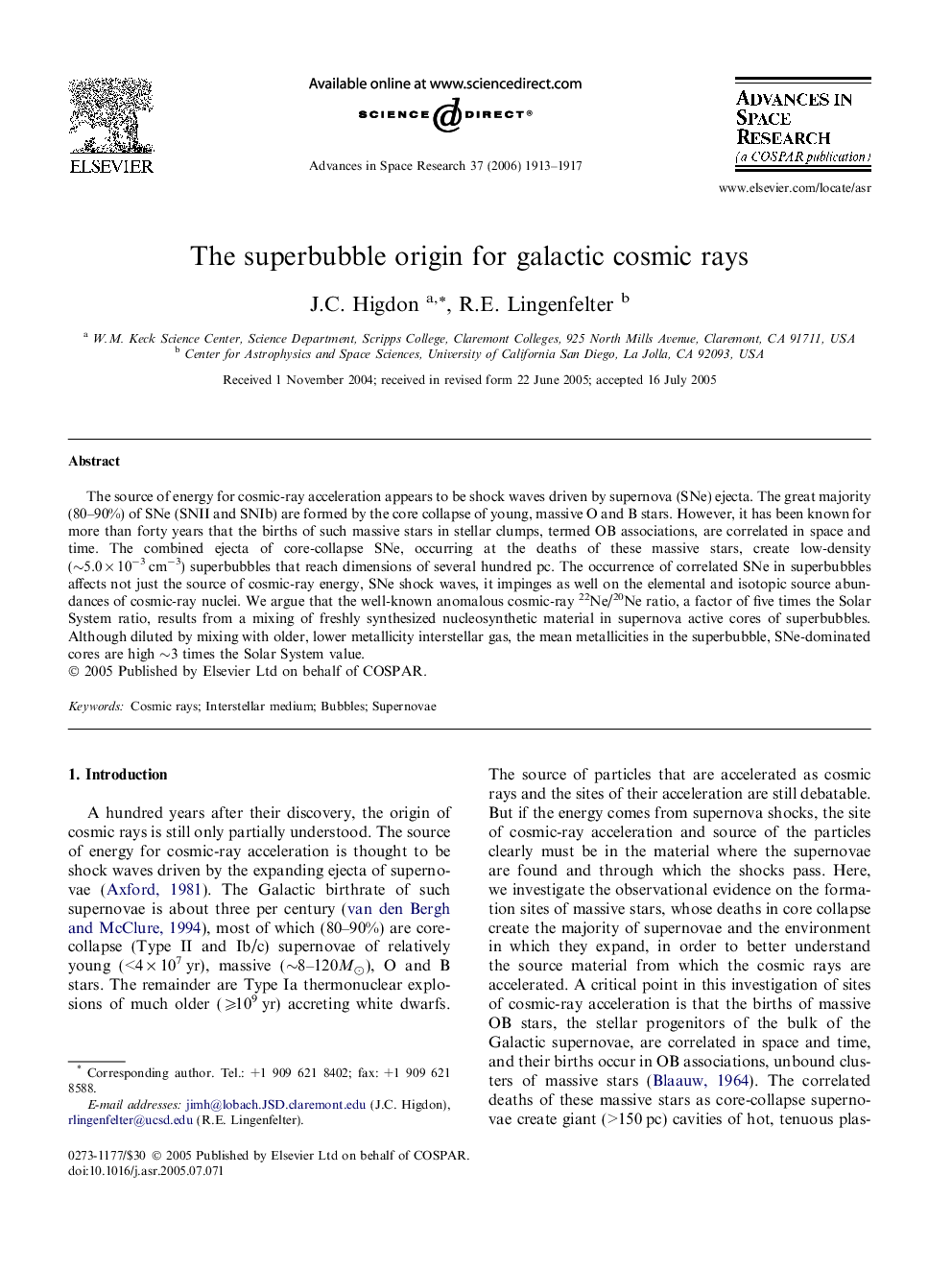| Article ID | Journal | Published Year | Pages | File Type |
|---|---|---|---|---|
| 1768462 | Advances in Space Research | 2006 | 5 Pages |
The source of energy for cosmic-ray acceleration appears to be shock waves driven by supernova (SNe) ejecta. The great majority (80–90%) of SNe (SNII and SNIb) are formed by the core collapse of young, massive O and B stars. However, it has been known for more than forty years that the births of such massive stars in stellar clumps, termed OB associations, are correlated in space and time. The combined ejecta of core-collapse SNe, occurring at the deaths of these massive stars, create low-density (∼5.0 × 10−3 cm−3) superbubbles that reach dimensions of several hundred pc. The occurrence of correlated SNe in superbubbles affects not just the source of cosmic-ray energy, SNe shock waves, it impinges as well on the elemental and isotopic source abundances of cosmic-ray nuclei. We argue that the well-known anomalous cosmic-ray 22Ne/20Ne ratio, a factor of five times the Solar System ratio, results from a mixing of freshly synthesized nucleosynthetic material in supernova active cores of superbubbles. Although diluted by mixing with older, lower metallicity interstellar gas, the mean metallicities in the superbubble, SNe-dominated cores are high ∼3 times the Solar System value.
